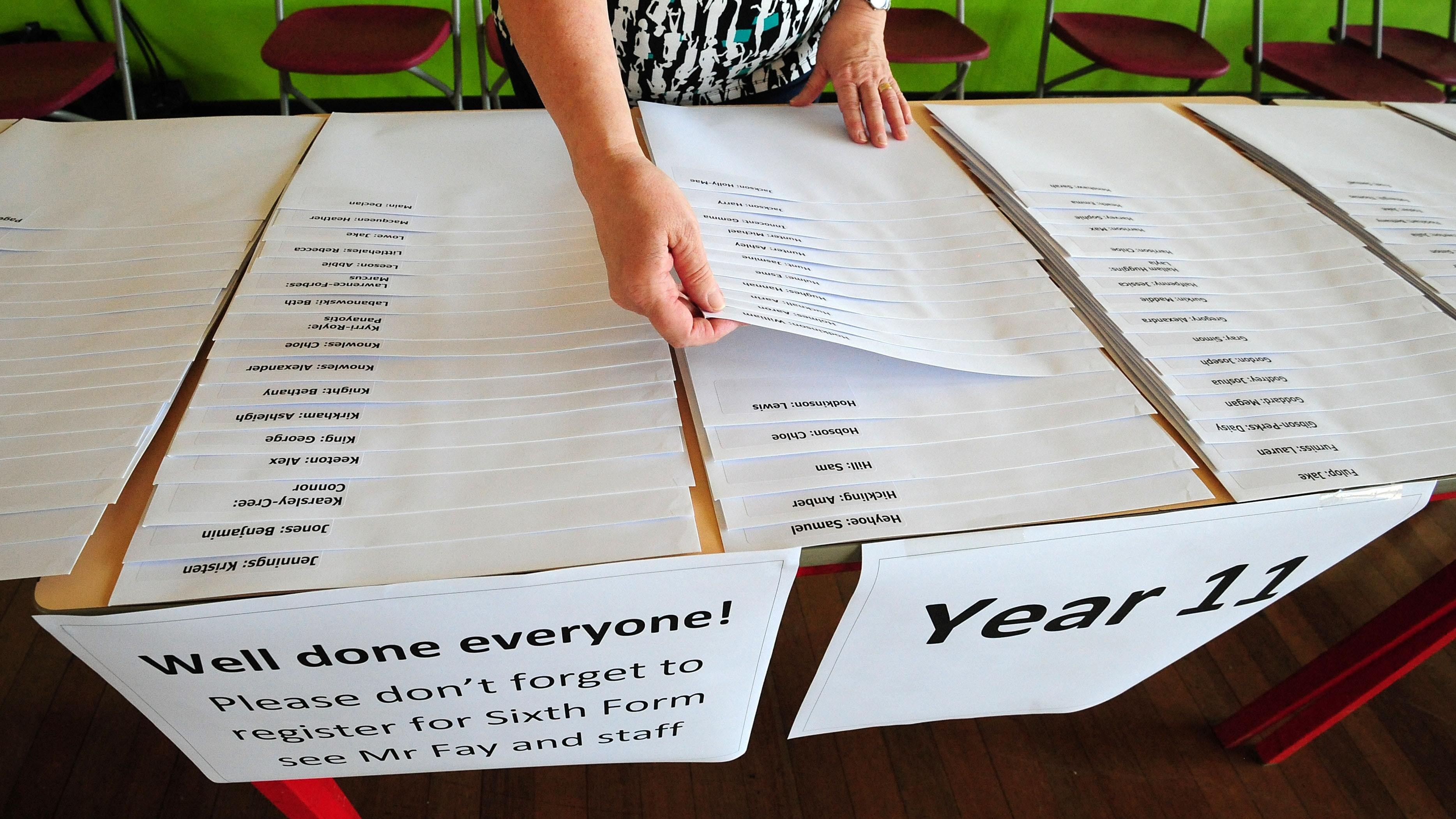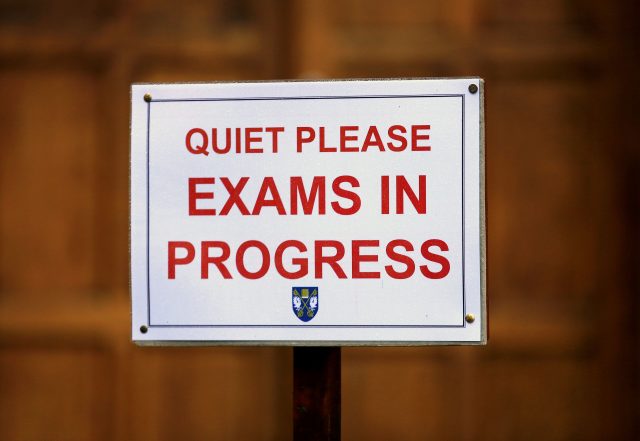
Here are the main figures in today’s GCSE results:
:: The proportion of entries receiving the top grades (A/7 or above) has fallen to 20%, down 0.5 percentage points on last year. This is the lowest since 2007 when the figure was 19.5%
:: For entries receiving a C/4 grade or above, the figure for 2017 was 66.3%, a drop of 0.6 percentage points on 2016, and the lowest since 2008
:: In the subjects where a new grading system has been introduced, 3.5% of 16-year-olds in England scored the highest grade 9 in maths, 3.3% scored grade 9 in English literature, and 2.6% scored grade 9 in English
:: In English literature, 72.6% of entries got C/4 or above, down from 75.1% last year. In English the figure rose from 60.2% to 62.1%
:: In maths the overall proportion of entries getting C/4 or above dropped from 61% in 2016 to 59.4%

:: The overall gap between girls and boys getting grade C/4 or above has widened since last year. Some 71% of girls got C/4 or higher compared with 61.5% of boys, a gap of 9.5 percentage points. Last year the gap was 8.9 points
:: The overall pass rate is unchanged on 2016. The proportion of entries receiving G/1 or above was 98.4%
:: In total there were 5,443,072 entrants for the exams, up 4% on last year

Enjoy the convenience of having The Sunday Post delivered as a digital ePaper straight to your smartphone, tablet or computer.
Subscribe for only £5.49 a month and enjoy all the benefits of the printed paper as a digital replica.
Subscribe